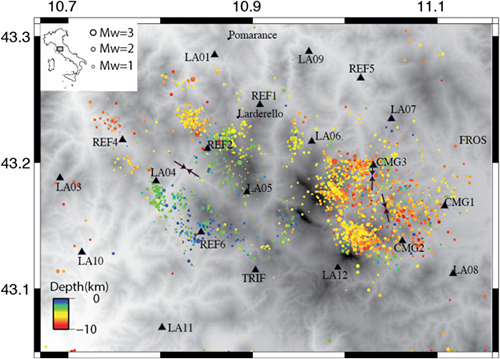Observation and analyses of shear wave splitting at the Larderello-Travale geothermal field, Italy

Piccinini, D., and G. Saccorotti (2018).
Journal of Volcanology and Geothermal Research, 363, 1-9, doi: 10.1016/j.jvolgeores.2018.08.004.
Abstract
We measured shear wave splitting (SWS) parameters from a large dataset of local microearthquakes recorded at the Larderello-Travale geothermal field (LTGF; Tuscany, Italy). For that geothermal area, seismic anisotropy is distributed in the upper crust following a complex pattern. Although the overall trend reflects the strike of the normal faults dominating the region, measurements at the southern and central part of the LTGF show large (up to 90°) deviations from the dominant polarization direction. This anomalous pattern suggests that besides the extensive dilatancy anisotropy, the fast wave polarization direction is also likely affected by the presence of over-pressurized geothermal fluids, by local rearrangement of the regional stress, and by the presence of non-vertical cracks. We found large differences in normalised delay times between sparse and clustered seismicity. While the average anisotropy percentage is on the order of 1.7%, a significant amount of our measurements exceeds the 4.5%, reaching values as high as 16%. The highest anisotropy percentages are associated with earthquakes located at the center and at the SE margin of the geothermal area, at depths lower than 5 km and in the 5–10 km range, respectively. This latter occurrence may be interpreted in terms of cracks filled with fluids which, given the expected pressure and temperature conditions, are likely in supercritical conditions. Shear-wave splitting thus confirms to be a powerful tool for better constraining location and extent of those deep fractured rock portions possibly hosting supercritical fluids, that represent the next frontier of geothermal exploitation due to their enhanced heat capacity.


Devi effettuare l'accesso per postare un commento.